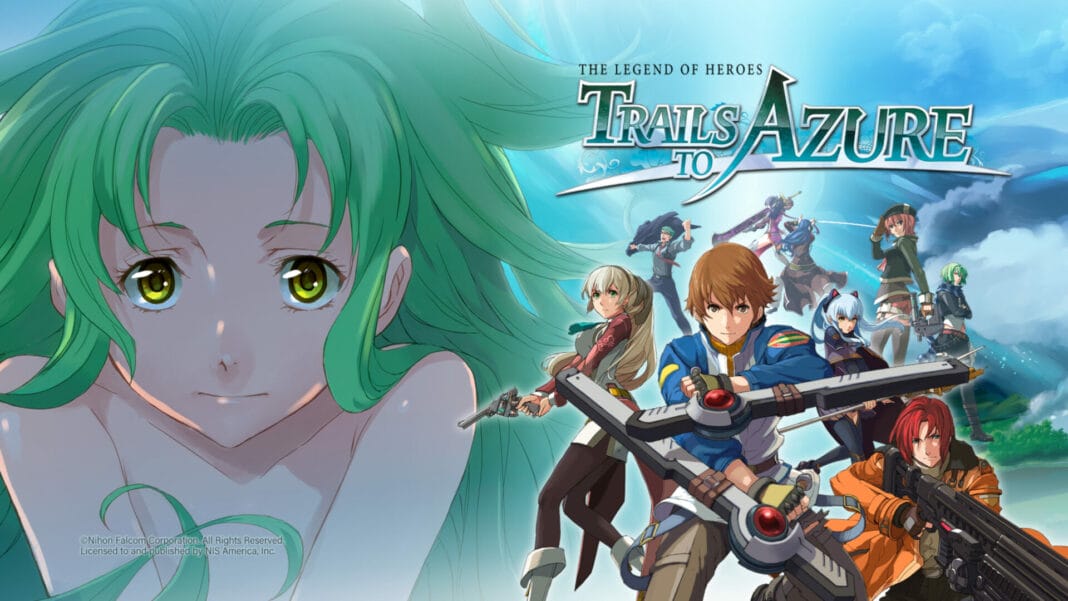At the Falcom 40th anniversary concert, NIS America and Falcom revealed a localization of Zero no Kiseki and Ao no Kiseki as The Legend of Heroes: Trails from Zero and Trails to Azure for PS4, Nintendo Switch, and PC. The Crossbell Duology (Trails from Zero and Trails to Azure) localization is happening in partnership with Geofront as detailed here. With Trails from Zero (Zero no Kiseki in Japan) having been released last year, Trails to Azure has now arrived to complete this Trails arc in the West. The game originally debuted in Japan in 2011 on PSP before seeing a PS4 release a few years ago. NIS America has now brought it to three platforms in the West simultaneously, which has resulted in one version being lesser (like with Zero) even though it served as the source for others. For this Trails to Azure PS4 vs Nintendo Switch vs PC feature, I will be comparing the game on all platforms across features, visuals, and what version you should buy if you have access to multiple systems.
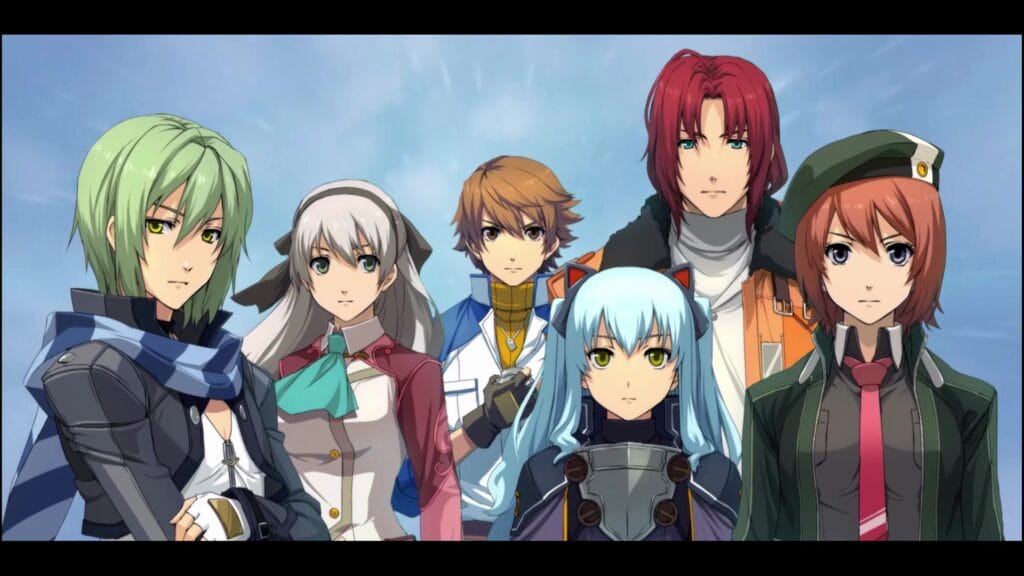
It is worth noting that I did my testing with the PS4 version played on PS5, the Nintendo Switch version played on my OLED model, and the PC version played on my laptop and also Steam Deck through review codes provided by NIS America. The screenshots are all from the early parts of the games or from portions later on without any spoilers, so don’t worry about having anything spoiled here. Trails to Azure also arrives with the post-launch updates or Trails from Zero included from the start in the current build I’ve been testing. A lot of what I cover below is similar to Trails from Zero’s platform difference, but all the new features in Zero have been included in Azure from the start in the review builds I have.
Trails to Azure PS4 vs Nintendo Switch vs PC – why are there different features?
Trails to Azure for PS4 in the West is Falcom’s Japanese release from 2020 with the English localization added. It has not had any new features or improvements. PH3 who handled the excellent recent Falcom PC ports took over porting duties for this on not just PC, but also Nintendo Switch for both Zero and Azure. This allowed the team to bring many of the improvements of the PC version over to the new Western Nintendo Switch version. Since NIS America opted to release all 3 platforms in the West at once, the PS4 version is lacking compared to the PC and Switch versions. I will discuss the major differences, but despite the PS4 version being the original release in this case, it now is a lesser release when compared to both Switch and PC.
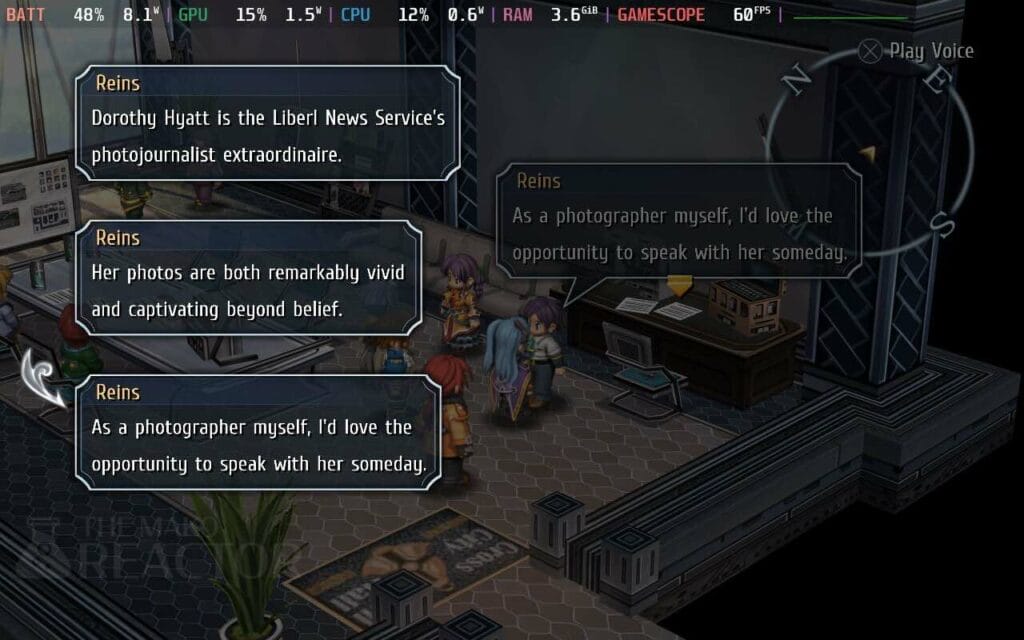
As with prior PH3 PC ports, the developer goes above and beyond with features, and that is the case here. I’ve played every Falcom PC release involving PH3, and Trails to Azure goes a step above Ys IX: Monstrum Nox that has been my favorite PC conversion so far from the team with how much it improved over the PS4 version. Trails to Azure is actually in a better state than Trails from Zero was at launch, since it includes newer features from the start that were patched into Zero’s Western release later on PC and Switch. Trails to Azure still has a few flaws right now on PC and Switch, but those have to do more with the game’s roots than this conversion.
Trails to Azure PS4 vs Switch features
The PS4 version of Trails to Azure, like Zero, has high-speed mode, and the option to use L2 or R2 for high-speed mode. That’s basically all you get in terms of quality of life improvements here. On Switch, you can choose whether encounters trigger when party leader touches and enemy, or any party member. You can enable fading animations on map transitions which is an amazing improvement added here. You can also disable the intro movie (with developer and publisher logos) on booting up the game to save time, change autosave interval, adjust UI scale from normal to large and also auto switch, choose whether to display condition icons for characters, change various high-speed mode settings, show BGM information, and toggle new graphics options not present on PS4.


The UI scale is very useful, because the normal UI scale option is too small for a handheld, and I found the normal option only good for when I played on my monitor on the desk. I’d recommend using the new large scale option, because it is very well-implemented for Switch. The auto will adjust depending on whether you play docked or handheld.
Trails to Azure High-Speed Mode differences on PS4 compared to Switch and PC
The high-speed mode on PS4 is a toggle, while on Switch you can set it to either work as a toggle or when you hold a button. You can also adjust the speedup factor in battle and on the field independently here. The PS4 version does not let you adjust any of this.
PH3 also went above and beyond with the input options. You can set the game to auto switch button prompts for Joy-Cons or Nintendo Switch Pro Controller, or choose whichever you like. You can also use a new inverted button prompt look and adjust button mappings here. There’s also a character glow option from Zero detailed here that is present in the Azure PC and Switch release.


The final Switch (and PC) feature not on PS4 is quite a big one. There’s a new message log now for reading the backlog with voiceovers. This is one of the best new features to be added to Trails to Azure (previously included in Trails from Zero) on PC and Switch. It works better than how most games implement it as well. Features like this make me wish PH3 did more Switch ports for other Japanese developers, and I hope NIS America’s Switch conversions done by PH3 get more publishers to contact them for ports rather than release bare-bones conversions like we see from some developers on Switch. Both Trails from Zero and my Trails to Azure PS4 vs Nintendo Switch vs PC comparisons make me hope NIS America keeps getting PH3 to work on Falcom games for PC and Switch going forward.
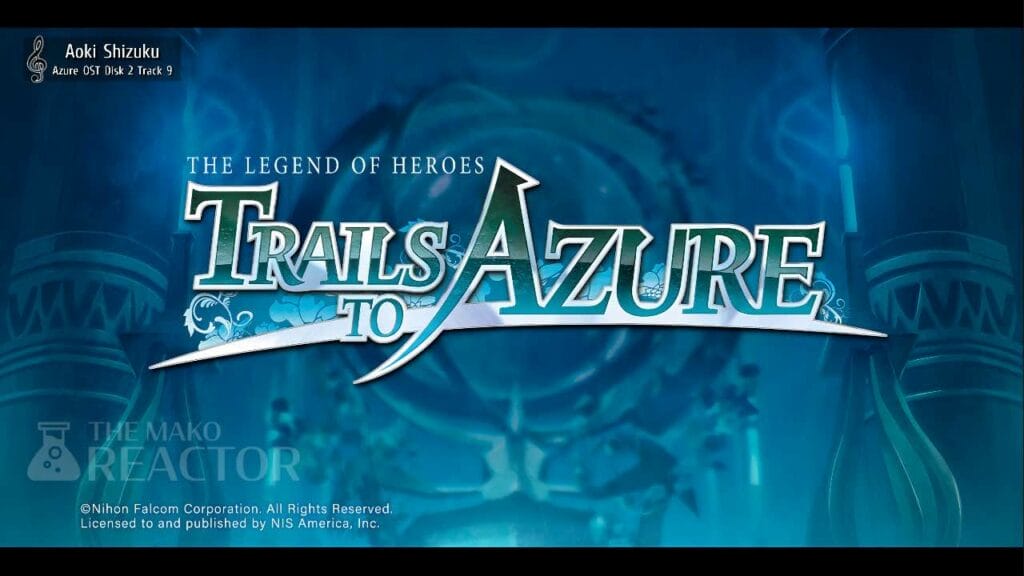
Trails to Azure PC and Switch exclusive features available from the start that were patched into Zero
In addition to all the Switch features that aren’t on PS4, the PC and Switch versions has a few notable additions that are worth highlighting. Obviously the PC port has more options when it comes to frame rate and image quality, but the other features make it shine. The PC and Switch versions have the “Show BGM Information” option from Zero that displays the track name and soundtrack information when a new song plays. This is a fantastic feature that I hope is brought to prior Falcom ports from PH3. It saves me the trouble of using Shazam or something like that, and also hits even harder in-game when you meet certain characters and remember specific songs then see the names.
The second PC and Switch-exclusive feature that I wanted to highlight is the “Dynamic Shadows” option. This was seemingly only in the PS Vita “Evo” version of Trails from Zero / Trails to Azure that never released outside Asia and Japan. This feature adds to the experience in specific locations, and it is a lovely addition to the graphics feature set. Another new feature added later for Zero that is available here from the start is Water Shader. This adds a dynamic reflection/refraction on some water surfaces.


Trails to Azure PS4 vs Switch vs PC graphics
As detailed here for Trails from Zero by Peter “Durante” Thoman from PH3, the PC and Nintendo Switch versions of both Zero and Azure feature tons of cleaned up textures and improvements across the board. The PS4 version feels like you’re playing a PSP game upscaled while PC and Nintendo Switch try and get it looking as good as possible on newer displays, but with one problem that also applied to Zero. There are some assets where you can tell the upscaling hasn’t been done in the best possible way, or some elements look off compared to the other parts of the scene. This is most noticeable with the UI icons in battle and some of the numbers in the interface during battle. These aren’t dealbreakers, but are the only issues I have with the PC and Switch versions. They are multiple times better than the PS4 version in its current state.
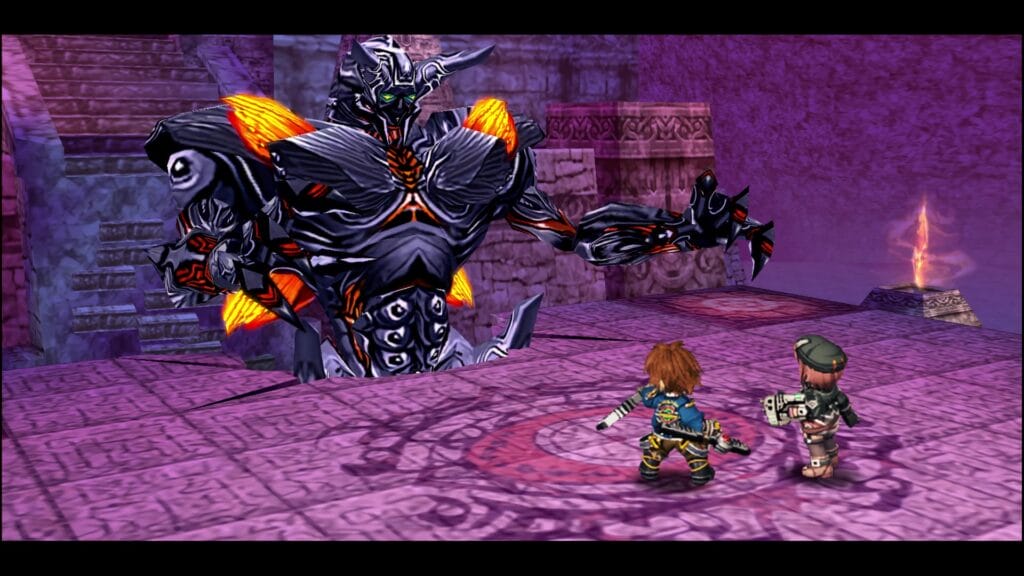
Some might prefer the raw look of the PS4 version, but having spent more than 55 hours across all three versions over the last few weeks, I cannot recommend the PS4 version to anyone if they have the option to play on PC or Switch. In addition to the differences detailed on the Steam blog post linked above, I’m disappointed in how so much of the interface on PS4 is still low resolution compared to even the Switch version in handheld mode.
Trails to Azure PS4 vs Switch vs PC – what to buy?
In this specific situation, like with Trails from Zero, I cannot recommend the PS4 version to anyone who has access to a PC and/or Switch. For the last few Falcom games from NIS America, the PS4 version was always an easy recommendation over Switch on the console side, especially for games like Ys IX and Ys VIII to those who wanted the best console version. Despite enjoying my time with Trails of Cold Steel III and IV on Switch, the PS4 versions offered much better experiences for those releases. In this case, on the console side, the Switch version is massively better than PS4 thanks to the new features and visual improvements. It almost feels like playing a enhanced remaster of a PS4 game rather than one that has released at the same time with this Switch release just like with Zero. The only advantage the PS4 version has is trophy support which matters to some people so keep that in mind.
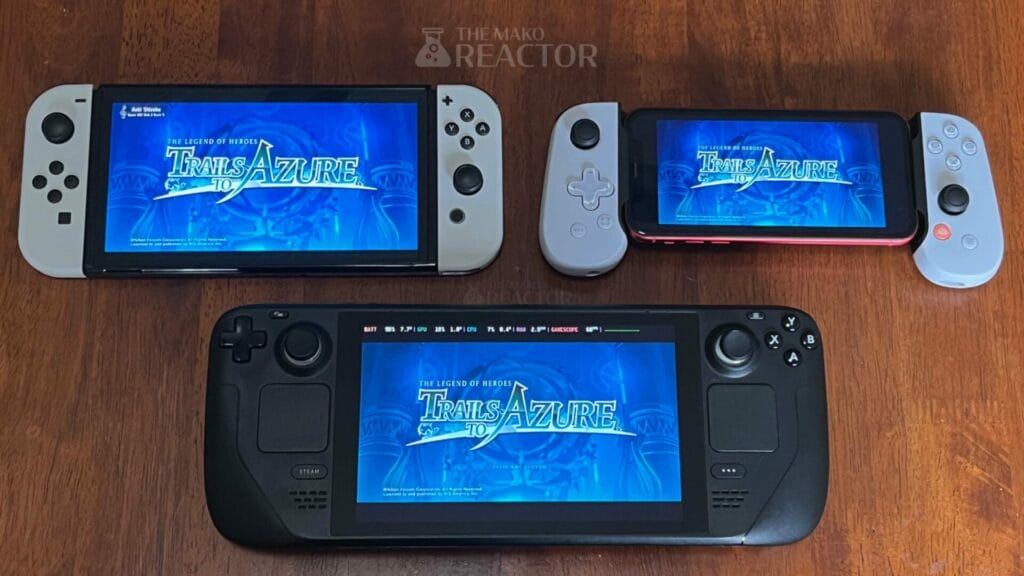
The bigger question for those who own multiple platforms is whether to buy Trails to Azure on Switch or PC. If you care about portability, the Switch version is an excellent way to experience Trails to Azure, and it exceeded my expectations even from PH3 when it comes to features and performance. If you have a Steam Deck and a Switch, the PC version on Steam Deck will offer the best possible experience on paper, but the battery life and OLED display may push things onto the Switch side for you especially with Zero’s PC features added to Switch from the start in Azure.
In an ideal world, you’d be able to sync your save from PC to Switch through Steam account like you can in other games, but right now that isn’t possible. I have no qualms about recommending either the PC or Switch version of Trails to Azrue to anyone looking for a fantastic experience and to be able to finally conclude Falcom’s Crossbell duology. This situation could’ve been avoided if NIS America released the PS4 version before instead of delaying it to launch on all three platforms simultaneously. The end result is Falcom fans in the West get a lesser version of the game on PS4 despite this version being the source for the PC and Switch versions.

Hopefully my Trails to Azure PS4 vs Nintendo Switch vs PC feature helped you decide where to buy the newest localized Falcom game. When Trails into Reverie launches later this year, I’m curious to see how the platform differences end up being. We do know that PH3 is handling the PC port of Trails into Reverie which likely means it will be the best version. As of now there is no clarity on who is doing the Switch version and how much better the PS5 version will be compared to the PS4 Falcom release.
The Legend of Heroes: Trails to Azure releases on March 14 in North America, March 17 in Europe, and March 24 in Australia and New Zealand for PS4, Nintendo Switch, and PC platforms.
